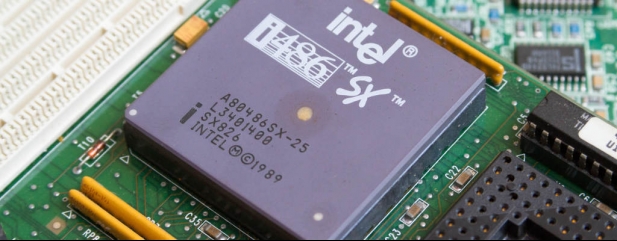Archived article
Please note that tax, investment, pension and ISA rules can change and the information and any views contained in this article may now be inaccurate.
Two low-cost funds for exposure to US value stocks

Many US stocks have become expensive in recent years and these high ratings make them less appealing in the current market environment which now favours cheaper valuations. Investors needn’t panic as there are easy ways to get exposure to more value-style stocks in the US.
During the pandemic price to earnings ratios for US growth stocks jumped to 31 times from 22, while those for value rose more modestly to 16 times from 13. This is at a time when inflation in America has climbed to its highest level in 40 years in January, with prices increasing by 7.5% from a year ago.
There is pressure on the US central bank, the Federal Reserve, to now implement a succession of interest rate rises. Highly rated growth stocks are more sensitive to rising interest rates as the value of future cash flows are worth less when discounted to the present day.
Anyone looking to maintain exposure to the US and switch out of expensive growth stocks into more value-style investment has several options. One is to look at individual stocks trading on
low price to earnings or low prices to earnings growth metrics.
Another is to look at exchange-traded funds which have a value tilt and a focus on the US market. Two examples listed on the London Stock Exchange are iShares Edge MSCI USA Value Factor ETF (IUVF) and UBS ETF Factor MSCI USA Prime Value ETF (UPVL).
They provide access to the value segment of the US equity market with a single transaction while offering broad diversification across a range of sectors. In addition, they provide a high degree of transparency and are cost efficient.
HOW DO THEY DIFFER?
iShares Edge MSCI USA Value Factor ETF is designed to mirror the performance of the MSCI USA Enhanced Value index, which is composed of US large and mid-cap companies with favourable value characteristics, based on the price to book value, price to forward earnings, and enterprise value to cash flow from operations. The ETF has a 0.2% expense ratio.
There are approximately 150 holdings in the index, which as of 31 January had an average price to forward earnings ratio of 10.5 and price to book ratio of 1.9, according to MSCI. That compares with a forward PE of 20.8 and price to book of 4.7 for the MSCI USA index.
From a sector perspective technology has the largest weighting at 30%, followed by healthcare (13.3%), consumer discretionary (11.9%), communication services (10.6%) and financials (10.4%).
Sectors with a relatively small weighting in the index include energy (3%), real estate (2.7%), utilities (2.4%) and materials (2.4%).
CONTRASTING FORTUNES
It is worth comparing the contrasting fortunes of two stocks in the ETF, namely Intel and IBM.
Over the past 12 months Intel’s share price has fallen by 24%. Although the company may appear undervalued on various valuation metrics, some might argue it is a value trap. This is because the business faces several structural challenges; once the prominent player within the chip industry, it has fallen behind competitors TSMC and Samsung.
Intel failed to deliver new chips on time which contributed to Apple’s decision to sever its relationship with the supplier and build its own chips. Intel also made a major strategic error when it failed to target the mobile chip market.
In marked contrast IBM is an example of how a value stock has commanded a low valuation because the market thought it was stuck it mud yet appears to be proving critics wrong.
IBM has been experiencing negative or low revenue growth for nearly a decade. However, CEO Arvind Krishna, who took control in 2019, has a new vision for the group based around RedHat, the company IBM acquired in 2018 for $34 billion.
RedHat enables customers to manage their hybrid cloud environments regardless of location. Put simply RedHat can be the glue to hold the cloud environment together, where clients are running workloads on multiple different systems including Amazon and Microsoft.
Recent results indicate that Krishna’s vision is coming to fruition. Hybrid cloud revenue, the segment where RedHat is based, reported $6.2 billion for the fourth quarter, an 18% year-over-year increase. IBM’s share price has risen 16% over the past year.

WHAT ABOUT THE UBS ETF?
UBS ETF Factor MSCI USA Prime Value mirrors the performance of the MSCI USA Prime Value index, which includes large and mid-cap companies based in the US that demonstrate value traits. The ETF has a 0.35% total expense ratio.
Whereas the MSCI USA Enhanced Value index focuses on stocks with higher value characteristics relative to their peers, the MSCI USA Prime Value index combines value with high quality characteristics.
The difference in terms of sector representation is that financials dominate the MSCI USA Prime Value index and therefore the UBS ETF. There is also a much bigger weighting to industrial stocks than in the iShares ETF discussed in this article.
Both ETFs have positions in Intel, Cisco and Pfizer in their top holdings. However, discount retailer Costco only features in the top holdings of the UBS ETF.
Over the past 12 months Costco’s shares have risen by 44% as the cash constrained consumer has increasingly seen the company as a source of value for low-cost necessities.
Costco’s Kirkland Signature products have been a key factor behind the group’s recent success. These are products that Costco can sell at least 20% below named brand competitors. A good example is allergy medication which costs as much as 92% less than named brands.

Important information:
These articles are provided by Shares magazine which is published by AJ Bell Media, a part of AJ Bell. Shares is not written by AJ Bell.
Shares is provided for your general information and use and is not a personal recommendation to invest. It is not intended to be relied upon by you in making or not making any investment decisions. The investments referred to in these articles will not be suitable for all investors. If in doubt please seek appropriate independent financial advice.
Investors acting on the information in these articles do so at their own risk and AJ Bell Media and its staff do not accept liability for losses suffered by investors as a result of their investment decisions.

 magazine
magazine








